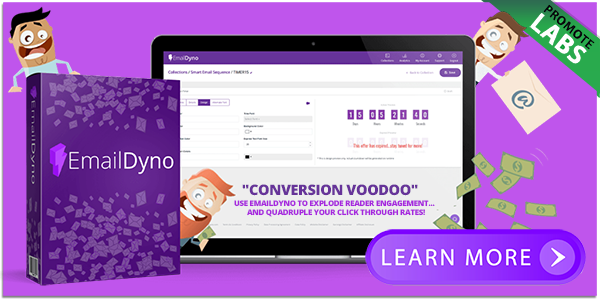This may sound like a "duh" step in your marketing prospect, but not having an…
Sizing Up the Black Friday/Cyber Monday Stand-Outs
[ad_1]
By now, you’ve read the headlines about Black Friday/Cyber Monday online sales. All indications are that they were red hot. Sales from online shopping were estimated at $3.34 billion by Adobe Digital Insights, a 21.6% year-over-year increase. And concerns that the combined Thanksgiving/Black Friday promotions would eat into Cyber Monday were unfounded. Consumers forked over another $3.39 billion, up about 10% from last year.
Adobe’s snapshot research from Black Friday – it’s measuring online transactions through its retail marketing technology – suggests so as well: “Retailers that have invested in mobile, email and social have seen 30% more sales on average and 25% higher average order values.’’
Let’s peek beyond the headlines to look at a few trends.
Mobile Shopping Continues to Soar
The estimated $1.1 billion in Black Friday sales that came from mobile devices saw a lot of news play over the weekend. More interesting to me, though, is another figure from Adobe Digital Insights – 56% of visits to retail websites on Black Friday were from mobile devices, but only 40% of sales were made using them.
That difference can be partially attributed to in-store shoppers doing price comparisons, but I’d argue some merchants lost sales on Black Friday because of clunky mobile shopping experiences. In recent weeks, I’ve had problems ordering via my mobile device on multiple occasions – and in some cases, my business went elsewhere. We’ve been emphasizing the need to make mobile a priority as our own research backs it up.
My colleague Greg Zakowicz (@whatsGregDoing) tweeted about Sears’ mobile emphasis leading up to Cyber Monday. The traditional retailer, who has gone through some rough times in recent years, was offering deals a day early to mobile and online users. It’s launched an app and has both a “buy online/pick up in store” option and in-vehicle pickup.
Restrictions, Final Sales and Fine Print
Greg shops online for both work and pleasure, and he was quite amazed at the number of final sales on fashion and the fine print. “30% off the entire website” sales often restricted returns. Other generically advertised sales excluded so many items it didn’t seem worth pursuing. Restricting returns on fashion is not a customer-centric move. And while marketplace sites that sell multiple brands are going to have exclusions, branded sites should steer clear.
The biggest flaw in Greg’s mind: The major women’s fashion website that made him re-enter a promo code at every stage of the sale to get the discount. He wasn’t test shopping this time – he was trying to buy a gift for his wife, and he almost gave up.
Cyber Monday, Cyber Weekend, Cyber Week?
Cyber Monday’s origins date back to when we weren’t as likely to have computers at home. Don’t laugh, kids. We’d take our Thanksgiving dinner food coma hangover to work on Monday and start clicking away.
Now that we can buy groceries from a smartphone on Thanksgiving Day, is this shopping “holiday” still relevant? Sure, if you factor in retailers’ desire to log those online sales before it becomes too hard to get the items to you by Dec. 25. We think Target’s “Cyber Week” idea is a great one.

While most Target purchases don’t involve a lot of mulling, any commerce merchant selling more expensive items that take a bit of deliberation would be wise to follow suit. Oh, wait. We found one.

The Good, the Bad and the Ugly
I love an email that does more than promote something. During the Black Friday/Cyber Monday period, two emails grabbed my attention.
Clothing retailer Everlane offered up this one:

I clicked through and had the option to watch a video describing what the company was planning for its Black Friday profits this year: helmets for their Vietnamese factory workers. Great video and visual storytelling.
Spoonflower, a site that offers custom-designed wallpaper, fabric and gift wrap, found a way to latch on to Small Business Saturday in an engaging way. It highlighted the small businesses that buy Spoonflower merchandise to make their products.
 Subject lines still matter, but given the emails we saw, most companies didn’t even try. Anthropologie sure got my attention with this clever Cyber Monday subject line:
Subject lines still matter, but given the emails we saw, most companies didn’t even try. Anthropologie sure got my attention with this clever Cyber Monday subject line:

And J.Crew’s creative copy gave me a laugh. Nuts – they’re healthy and they work well in puns:

Lots of retailers skip the images in crafting big promo emails, especially for basic site-wide X% off sales. But guys, you still need a graphic designer:

Failing to Ignite
I’m pretty sure I had previously unsubscribed from some of the sites that sent me email these past few days (a huge no-no that can get your emails blocked as spam). But I was still subscribed to one site that thoroughly irritated me by trying to attract my interest with the email equivalent of a megaphone pressed against my ear.
Three days before Black Friday, this company, that I hadn’t heard from in months, started emailing me – a lot. Two emails arrived within 24 minutes of each other, and they continued arriving every day. There was no “we missed you” message. Instead, they launched into the standard marketing language (apparently, I have great taste). It felt desperate, and it reinforces one of our basic best practices: Clean your list before the holidays, and send to your engaged subscribers.
And finally, I close with Greg’s best example of an email goof.

[ad_1]




